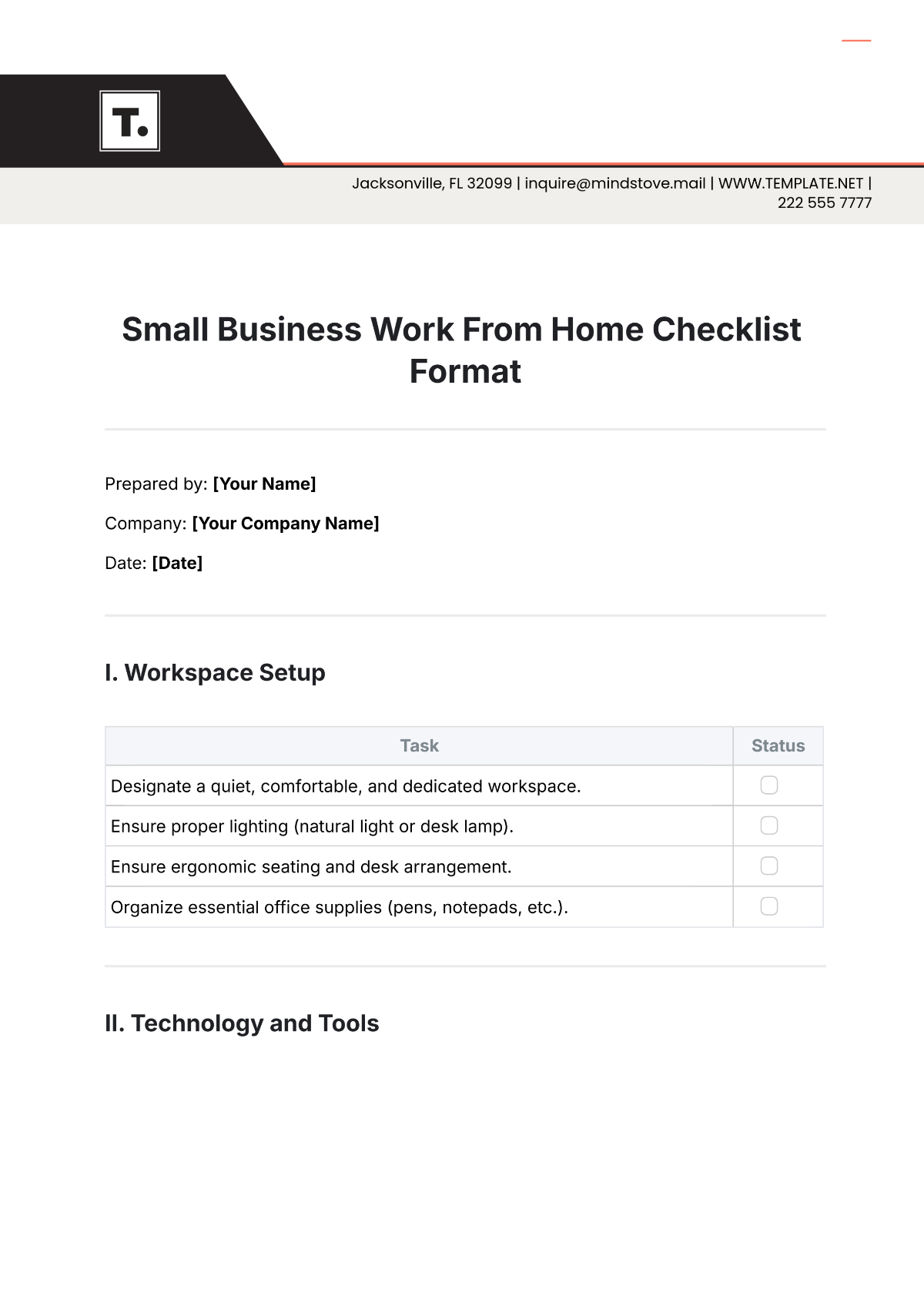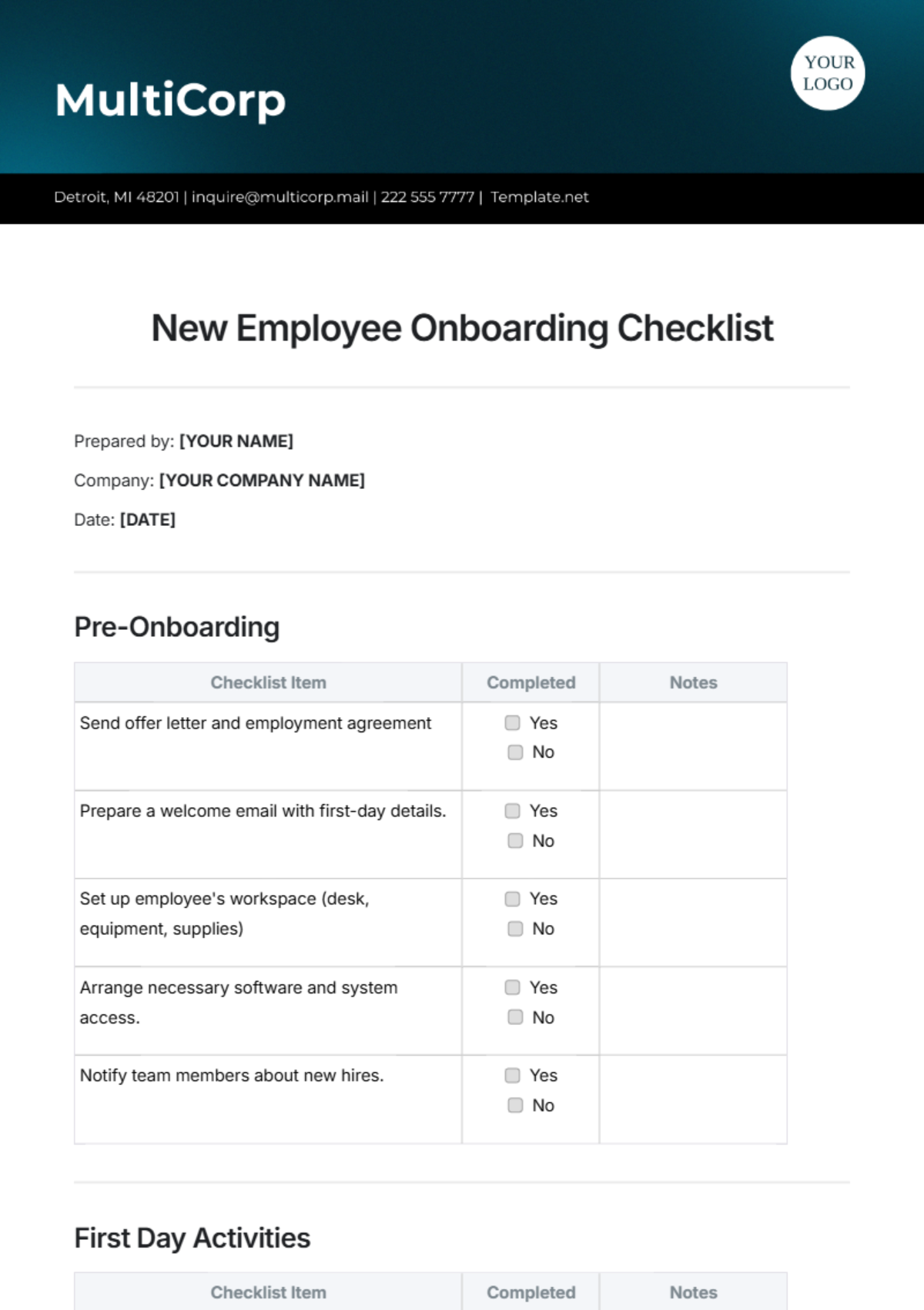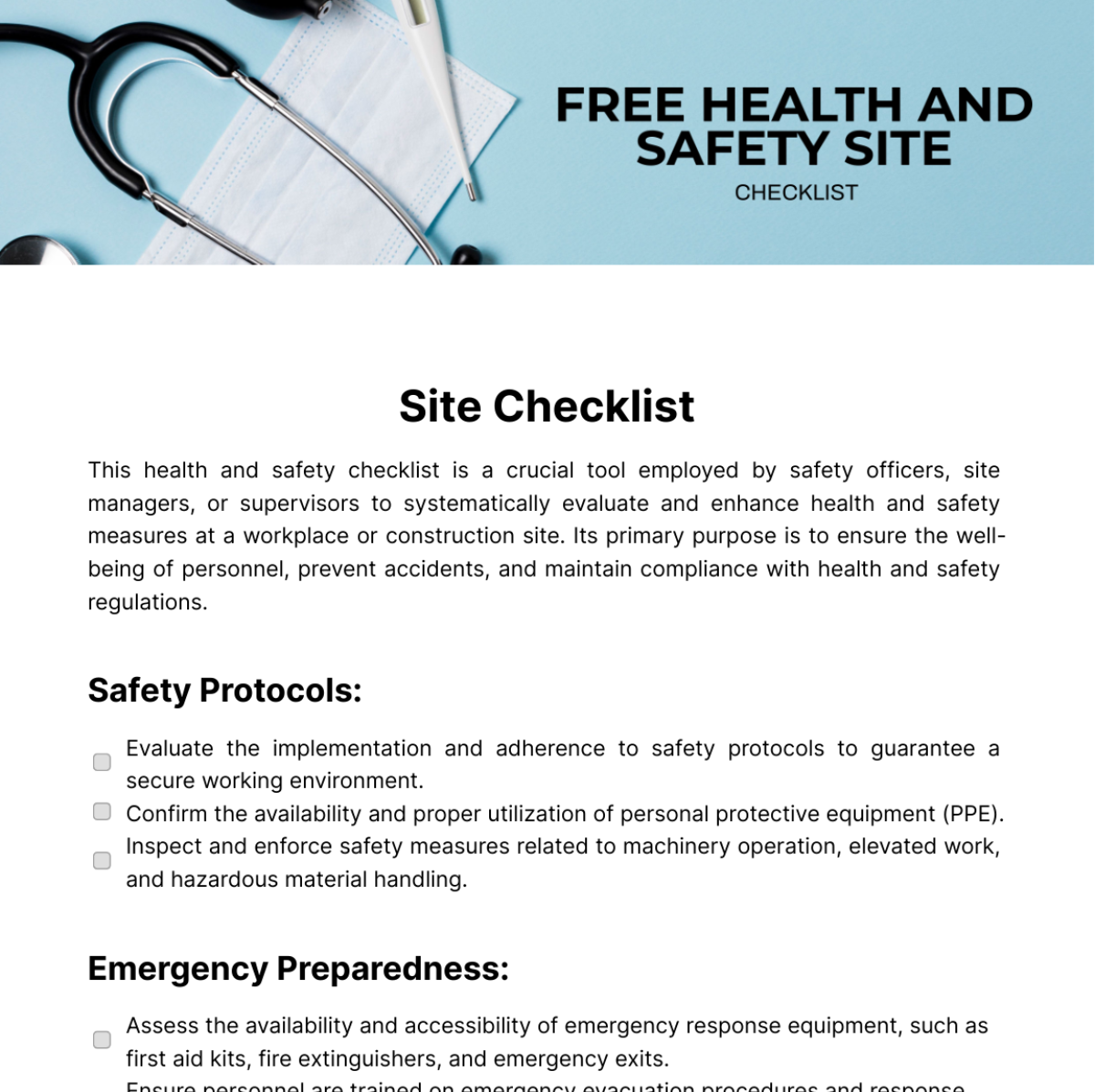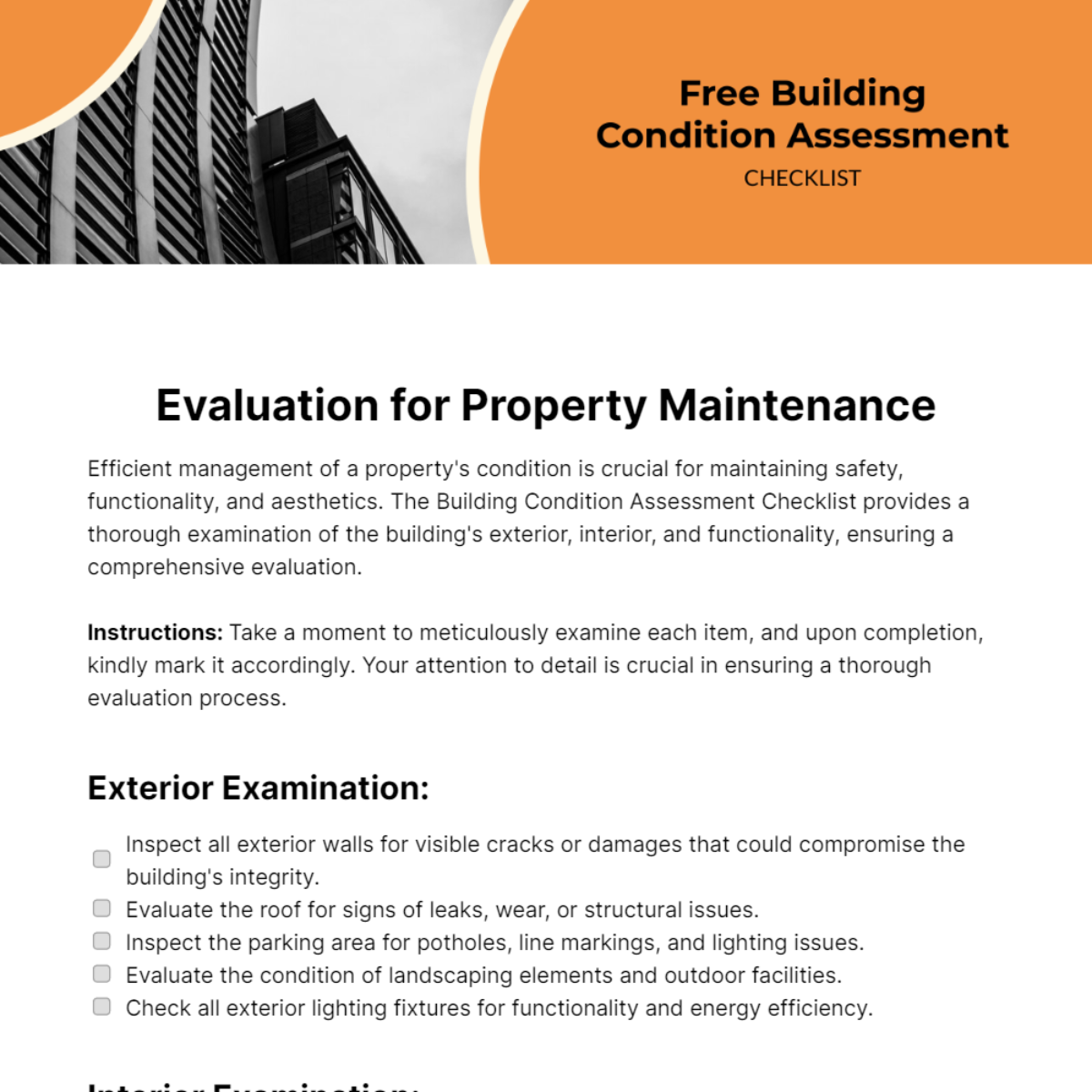Site Checklist
This health and safety checklist is a crucial tool employed by safety officers, site managers, or supervisors to systematically evaluate and enhance health and safety measures at a workplace or construction site. Its primary purpose is to ensure the well-being of personnel, prevent accidents, and maintain compliance with health and safety regulations.
Safety Protocols:
Evaluate the implementation and adherence to safety protocols to guarantee a secure working environment.
Confirm the availability and proper utilization of personal protective equipment (PPE).
Inspect and enforce safety measures related to machinery operation, elevated work, and hazardous material handling.
Emergency Preparedness:
Assess the availability and accessibility of emergency response equipment, such as first aid kits, fire extinguishers, and emergency exits.
Ensure personnel are trained on emergency evacuation procedures and response protocols.
Confirm the readiness of on-site emergency teams and communication systems.
Worksite Organization:
Evaluate the organization and cleanliness of the worksite to prevent tripping hazards and facilitate efficient operations.
Verify that materials are stored in designated areas and labeled appropriately.
Assess the overall organization of tools, ensuring a clutter-free and safe working environment.
Health and Hygiene Measures:
Monitor the availability and accessibility of hygiene facilities, including washrooms and handwashing stations.
Ensure the provision of sanitation measures and waste disposal facilities.
Confirm the proper handling and disposal of hazardous waste materials.
Structural Integrity and Ergonomics:
Assess the structural integrity of buildings, scaffolding, and temporary structures.
Verify that workspaces are ergonomically designed to prevent musculoskeletal issues.
Identify and address any signs of structural instability or potential ergonomic hazards.
Utilities and Services:
Confirm that utility lines are identified, marked, and protected during work activities.
Assess the adequacy of utilities, such as water and electricity, for the needs of the site.
Verify the presence and accessibility of utility shut-off points in case of emergencies.
Training and Compliance:
Assess whether workers are using PPE correctly and adhering to safety guidelines.
Confirm that personnel are aware of and following established safety procedures and protocols.
Monitor the site for compliance with regulations related to working hours, breaks, and rest areas.
Community Relations:
Evaluate the impact of activities on the local community, addressing noise, dust, and traffic concerns.
Ensure proper communication with neighboring properties about ongoing work.
Address community complaints or concerns in a timely and transparent manner.
Regular Inspection Schedules:
Implement a regular schedule for health and safety inspections to monitor ongoing compliance and safety measures.
Conduct surprise inspections to identify potential issues and ensure continuous improvement.
Document and communicate findings to relevant stakeholders for corrective actions.







